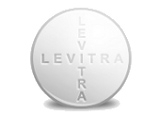When were pharmacies invented
The history of pharmacies dates back thousands of years, with evidence of their existence found in ancient civilizations such as Egypt and Mesopotamia. These early pharmacies were not as we know them today, but rather, they served as centers for the preparation and distribution of medicinal remedies. The knowledge and practice of pharmacy have evolved significantly over time, and understanding its origins provides us with valuable insights into the development of modern healthcare.
One of the earliest known pharmacies can be traced back to the ancient Egyptians, who are credited with the invention of many medical practices. These early pharmacies were established in temples dedicated to the gods of medicine, such as Imhotep. The priests and priestesses who maintained these temples were responsible for the preparation and distribution of various medicinal remedies. They utilized herbs, animal parts, and minerals to create elixirs, ointments, and beverages that were believed to possess healing properties.
In Mesopotamia, ancient Babylonians and Assyrians were also known to have established pharmacies. These early pharmacies were located in the city centers and were often run by individuals who had extensive knowledge of medicinal plants and herbs. They served as essential resources for the community, providing remedies for various ailments and injuries. The practices and knowledge of these early pharmacies were passed down through generations, laying the foundation for the development of pharmacy as a profession.
As civilizations continued to develop, particularly in ancient Greece and Rome, the field of pharmacy continued to progress. These ancient societies saw the emergence of renowned physicians such as Hippocrates and Galen, who made significant contributions to the field. They not only expanded the knowledge of medicinal plants but also developed sophisticated methods of compounding and preparing medications. With the establishment of medical schools and the standardization of pharmaceutical practices, pharmacies became more organized and accessible to the general population.
Early Origins of Pharmacies
The origins of pharmacies can be traced back to ancient civilizations, where the practice of preparing and dispensing medicinal substances began. In ancient Egypt, for example, pharmacists, known as "pastophor," were responsible for creating and storing medicinal compounds. They worked in the temple of Imhotep, the god of medicine, and were regarded as skilled practitioners.
In ancient Greece, the concept of pharmacies further evolved. Asclepius, the Greek god of medicine, was believed to have taught the art of pharmacy to his sons, who passed it down to their descendants. The Greek city of Alexandria became a hub for medical knowledge and innovation, with the Library of Alexandria serving as a center for research and education in pharmaceuticals.
During the Islamic Golden Age, which spanned from the 8th to the 14th centuries, pharmacies known as "bimaristans" were established in Islamic cities. These institutions provided medical care, including the preparation and dispensing of medications. Pharmacists, known as "attars," were highly respected and played a crucial role in the healthcare system of the time.
In Europe, pharmacies began to emerge in the medieval period. Monastic infirmaries and hospitals played a significant role in the development of pharmacies, with monks and nuns often being responsible for preparing medicinal remedies. The first official pharmacy, called the Santa Maria Novella in Florence, Italy, was established in the 13th century.
Overall, the early origins of pharmacies can be traced back to multiple ancient civilizations, where the practice of preparing and dispensing medicinal substances began. From ancient Egypt and Greece to the Islamic Golden Age and medieval Europe, pharmacies played a crucial role in providing healthcare and advancing pharmaceutical knowledge.
The Ancient Beginnings of Pharmacy
Pharmacy, as we know it today, has a long and fascinating history that can be traced back to ancient times. The practice of pharmacy can be seen in civilizations such as ancient Mesopotamia, Egypt, Greece, and Rome.
During this time, pharmacies were more than just places to buy medicine - they were also centers of learning and knowledge. Ancient pharmacists, or "pharmakoi," were highly respected members of society who possessed a wealth of knowledge about medicinal plants and their uses.
In ancient Mesopotamia, for example, pharmacists played a crucial role in the healing process. They would prepare and dispense various herbal remedies, as well as perform surgeries and use various medical instruments. The ancient Egyptians also had a sophisticated understanding of pharmacy, using plants like aloe vera and myrrh for their healing properties.
The ancient Greeks and Romans further advanced the field of pharmacy. Greek physician Hippocrates, often referred to as the 'father of medicine,' believed in treating the whole person and emphasized the importance of a healthy lifestyle. His teachings greatly influenced the practice of pharmacy, as pharmacists were encouraged to provide patients with lifestyle advice alongside medications.
Ancient Rome, with its vast empire, also played a significant role in the development of pharmacy. Roman pharmacists, known as "archiatros," had access to a wide range of medicinal plants from across their empire. They would formulate remedies, mix ingredients, and dispense medications, often using methods similar to compounding pharmacies today.
Pharmacy in Ancient Egypt
Ancient Egypt is often regarded as one of the earliest civilizations that laid the foundation for the practice of pharmacy. The ancient Egyptians had a deep understanding of medicine and used various herbs and natural substances to treat illnesses and ailments.
Pharmacists in ancient Egypt, who were often referred to as "wise men" or "doctors," played a crucial role in the community. They were responsible for preparing and dispensing medications, as well as providing advice on health and healing.
Herbal remedies were a prominent feature of ancient Egyptian pharmacy. Pharmacies contained a wide variety of herbs and plants, such as aloe vera, frankincense, myrrh, and garlic, which were used for their medicinal properties.
Ancient Egyptian pharmacists also used animal products in their preparations. Substances such as honey, milk, and animal fats were incorporated into medicinal remedies to enhance their healing properties.
Medical texts played a significant role in the field of ancient Egyptian pharmacy. The Ebers Papyrus, one of the oldest medical texts in existence, documented over 700 medicinal formulations and provided detailed instructions on their preparation and use.
The practices and knowledge of ancient Egyptian pharmacy were passed down through generations, allowing for the continued development and advancement of pharmacy in later civilizations.
The Medieval Era
The Medieval Era, also known as the Middle Ages, spanned roughly from the 5th to the 15th century. During this time, the concept of pharmacies as we know them today was not yet fully established. Instead, what existed were apothecaries and monastic infirmaries, which served as the primary providers of medical treatments and remedies.
Apothecaries were individuals who specialized in the preparation and dispensing of medicines. They would often work out of their own shops, where they would store herbs, roots, and other medicinal ingredients. These ingredients would be used to create various concoctions, such as ointments, powders, and potions, which were believed to have healing properties.
Monastic infirmaries, on the other hand, were medical facilities within monasteries and convents. These establishments provided care to the local population, as well as to the members of the religious community. Monks and nuns who were skilled in medicinal practices would offer treatments using herbs, herbal remedies, and other natural substances.
During the Medieval Era, the knowledge of medicinal herbs and remedies was largely passed down through oral tradition or written texts, such as herbals. These texts described the uses and properties of various plants, as well as instructions for preparing remedies. However, there was limited scientific understanding of the human body and disease, and medical treatments often relied on folk beliefs and superstitions.
The Role of Monasteries in Pharmacy
During the Middle Ages, monasteries played a crucial role in the development and advancement of pharmacy. Monks and nuns dedicated themselves to a life of prayer and service, but they were also skilled in various fields of study, including medicine and the preparation of remedies. Their extensive knowledge and access to rare ingredients made monasteries centers of pharmaceutical innovation.
Herbal Remedies: Monasteries had gardens where they cultivated various medicinal plants, which they used to prepare herbal remedies. Monks carefully studied the properties of different plants and their effects on the human body. They collected, dried, and stored herbs to create potions, ointments, and tinctures that were used to treat various ailments.
Experimental Laboratories: Monasteries had well-equipped laboratories where monks performed experiments and conducted research to develop new therapeutic substances. They experimented with alchemy and explored the properties of different minerals, metals, and chemicals. Many important discoveries in pharmacy were made within the walls of monastic laboratories.
Pharmacy Texts: Monks and nuns transcribed and preserved ancient pharmacy texts, often translating them into different languages. They developed libraries within the monastic complexes, which became important centers of knowledge. These texts shared valuable information about the preparation and administration of medicines.
Distribution and Education: Monasteries also played a crucial role in distributing medicines to the local population. They would provide medical care and dispense medicines to the sick and needy. Additionally, monastic institutions served as centers of education, training aspiring pharmacists and passing on their knowledge to future generations.
In conclusion, monasteries contributed significantly to the development and advancement of pharmacy during the Middle Ages. Their dedication to education, research, and the distribution of medicines helped shape the field of pharmacy and laid the foundation for modern pharmaceutical practices.
Development of Apothecaries
The development of apothecaries can be traced back to ancient civilizations such as Ancient Egypt, Mesopotamia, and China. In these societies, individuals with knowledge of herbs and natural remedies played a crucial role in healing the sick and providing treatment for various ailments. These early healers would collect and prepare herbal remedies to alleviate symptoms and promote overall health.
As civilizations advanced, so did the practice of apothecaries. In Ancient Greece, renowned figures such as Hippocrates and Galen contributed to the development of pharmacology and medicine. They studied the properties of plants and their medicinal uses, laying the foundation for the field of pharmacy.
During the Middle Ages, apothecaries began to gain recognition as their knowledge and expertise expanded. They became established as key figures in the healthcare system, often working closely with physicians to dispense medications and provide medical advice.
The Renaissance period saw significant advancements in the field of pharmacology. The discovery of new drugs and the development of more sophisticated methods for preparing and compounding medications revolutionized the practice of apothecaries. This period also marked the establishment of formal pharmacy organizations and the introduction of regulations to ensure the quality and safety of medications.
By the 19th century, the role of apothecaries evolved into that of the modern pharmacist. The development of scientific methods, such as the isolation and identification of active constituents in plants, led to the creation of standardized medications. Pharmacies became dedicated establishments where individuals could seek professional advice, obtain prescriptions, and purchase medications.
Today, the tradition of apothecaries lives on in the modern pharmacy. Pharmacists continue to play a vital role in healthcare, ensuring the safe and effective use of medications and providing valuable healthcare services to the community.
The Modernization of Pharmacy
In the modern era, pharmacies have undergone significant changes and transformations. Advancements in technology and the development of new drugs have revolutionized the way pharmacies operate and the services they provide.
One of the key aspects of the modernization of pharmacy is the use of electronic systems for inventory management and prescription processing. This has streamlined the workflow in pharmacies, making it easier to track medication stocks and ensure accurate dispensing of prescriptions. Electronic systems also enable pharmacists to access patient information quickly, allowing for more efficient medication counseling and adherence monitoring.
Furthermore, the introduction of automated dispensing machines has further improved the efficiency of pharmacies. These machines can accurately count and package medications, reducing the risk of errors and saving time for pharmacists. Additionally, automated dispensing machines can store a large number of medications, ensuring that pharmacies have a wide range of drugs readily available for patients.
The modernization of pharmacy has also seen an increase in the role of pharmacists as healthcare providers. Pharmacists now play a crucial role in medication therapy management, helping patients optimize the use of their medications and prevent adverse drug interactions. They collaborate with other healthcare professionals to develop treatment plans and provide comprehensive care to patients.
Moreover, the internet has revolutionized the way pharmacies interact with patients. Online pharmacies have emerged, offering convenient access to a wide range of medications and healthcare products. Patients can now order their prescriptions online and have them delivered to their doorstep, eliminating the need to visit a physical pharmacy. This has greatly improved accessibility to medications, especially for individuals with limited mobility or those living in remote areas.
In conclusion, the modernization of pharmacy has brought about significant advancements in technology, automation, and patient care. These developments have improved the efficiency and accessibility of pharmacies, allowing for better healthcare outcomes and a more patient-centered approach.
The First Established Pharmacies
The origin of pharmacies can be traced back to ancient civilizations such as Egypt, Mesopotamia, and China. These early pharmacies served as places where medicine and healing practices were developed, stored, and dispensed. They played a crucial role in the growth and development of medicinal knowledge.
Ancient Egyptian Pharmacies
In ancient Egypt, pharmacies were known as "House of Life" and were closely associated with temples. These pharmacies were responsible for the preparation and distribution of medicinal herbs, ointments, and potions. The ancient Egyptians had a vast knowledge of plants and their healing properties, and their pharmacies played a vital role in preserving this knowledge.
Mesopotamian Pharmacies
Mesopotamia, known as the cradle of civilization, also had its share of pharmacies. These pharmacies were located in city-states and were run by skilled healers who practiced the art of healing and concocting medicines. The tablets and clay pots found in ancient Mesopotamian pharmacies provide valuable insights into the medicine and healing practices of the time.
Chinese Pharmacies
The Chinese were pioneers in pharmacy and herbal medicine. Chinese pharmacies, known as "Apothecaries," were established during the Han Dynasty and were regulated by the imperial court. These pharmacies were responsible for the preparation and distribution of herbal remedies, acupuncture treatments, and other medicinal practices. The Chinese pharmacists were highly trained and had a vast knowledge of the medicinal properties of various plants and herbs.
The establishment of these early pharmacies marked the beginning of a long and rich history in the field of pharmacy. They laid the foundation for the development of modern pharmacies and pharmaceuticals, shaping the way medicine is practiced and dispensed today.
Advancements in Pharmacy Education
Over the centuries, pharmacy education has undergone significant advancements to meet the changing demands of healthcare and improve patient outcomes. These advancements have helped pharmacists gain a deeper understanding of medicines and their effects on the human body, enabling them to provide better care and advice.
One of the key advancements in pharmacy education is the development of standardized curricula. Today, pharmacy schools offer structured programs that cover various topics such as pharmacology, pharmaceutics, therapeutic principles, and pharmaceutical care. These curricula aim to provide students with a comprehensive knowledge of drug therapy and its application in different patient populations.
Pharmacology and Therapeutics
In recent years, there has been a greater emphasis on pharmacology and therapeutics in pharmacy education. Pharmacology focuses on the study of how drugs interact with the body, while therapeutics is concerned with the management of drug therapy for specific medical conditions. By delving deeper into these areas, future pharmacists are equipped with the skills to make informed decisions about medication use, dosage, and potential side effects.
Experiential Learning
Another significant advancement in pharmacy education is the incorporation of experiential learning. This involves hands-on training in real-world settings such as hospitals, community pharmacies, and clinics. Through these practical experiences, students are able to apply their theoretical knowledge, develop critical thinking skills, and gain a better understanding of the role of a pharmacist in patient care.
Furthermore, advancements in technology have also had a major impact on pharmacy education. The integration of computer simulations, virtual patients, and online learning platforms have transformed the way pharmacists learn and practice. These tools allow students to engage in interactive learning experiences and gain exposure to a wider range of patient scenarios, preparing them for the complex challenges of modern pharmacy practice.
In conclusion, advancements in pharmacy education have played a crucial role in preparing pharmacists to meet the evolving needs of patients and the healthcare system. From standardized curricula to a focus on pharmacology and therapeutics, as well as experiential learning opportunities and technological innovations, these advancements have propelled the profession forward and ensured that pharmacists are equipped with the knowledge and skills to provide optimal pharmaceutical care.
Follow us on Twitter @Pharmaceuticals #Pharmacy
Subscribe on YouTube @PharmaceuticalsYouTube





Be the first to comment on "When were pharmacies invented"